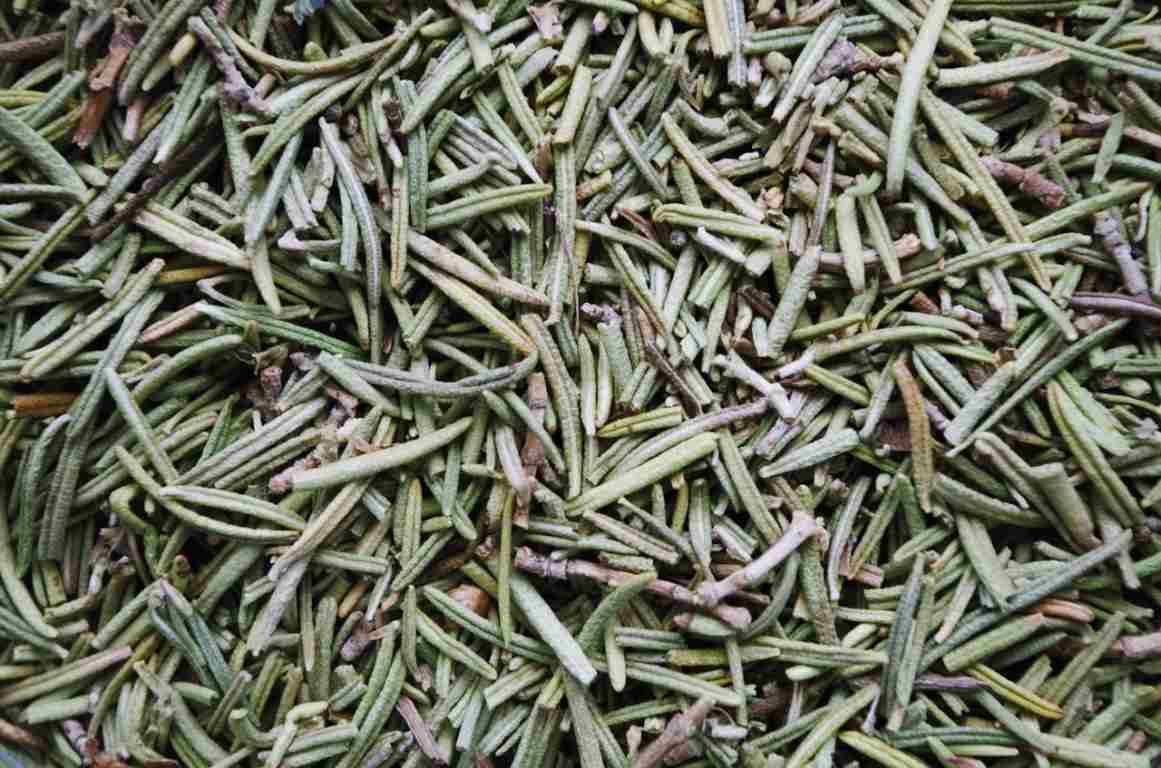Introduction to Rosemary Oil Project Report, Extraction/Manufacturing Business Plan: Rosemary tree is a therapeutic, aromatic, and condiment plant that is related to the family Labiatae. It is greatly extended in Algeria and majorly used in traditional medicine. Rosemary is ideal because it is of interest as a conserving agent due to its antioxidative features and it is used in the medicinal, food, and cosmetic trades. Rosemary is one of those humble herbs which are easy to cultivate, easy to use, and simple to store.
Properties of Rosemary Oil: Rosemary oil is obtained from Rosmarinus officinalis also popular as Rosmarinus coronarium of the Labiatae family and is also prevalent as incensier. This clean-smelling Rosemary essential oil is perfect for exciting the brain, enhancing the liver and gall bladder. It is useful in enhancing hair and scalp health. Rosemary oil has a clear, powerful energizing herbal smell, is transparent in color, and is watery when comes to viscosity.
A guide to Rosemary Oil Project Report, Extraction process, Manufacturing Business Plan

Uses of Rosemary Oil: A Rosemary tree is a shrubby evergreen bush that attains the height of 1.5 meters or four feet high with green-gray needle-shaped leaves bearing pale blue or lilac flowers. There are numerous uses of Rosemary oil which are seen in the medicine to cosmetics sectors. It is extensively seen in products like oils, shampoos, lotions, gels, soaps, and sprays, which could be basically from homemade products.
Business plan for starting Rosemary Oil Manufacturing Business
To start a small-scale Rosemary Oil Manufacturing Business, craft a perfect business plan by following the below list:
- Market demand of Rosemary Oil Manufacturing Business
- Implementation schedule of Rosemary Oil Manufacturing Business
- List of approvals required for starting Rosemary Oil Manufacturing Business
- Area required to start Rosemary Oil Manufacturing Business
- Raw materials required for starting Rosemary Oil Manufacturing Business
- List of machinery required to start Rosemary Oil Manufacturing Business
- Manufacturing process of Rosemary Oil
- Project economics of Rosemary Oil Manufacturing Business
- Profitability in Rosemary Oil Manufacturing Business
Market demand of Rosemary Oil Manufacturing Business
The market potential of Rosemary Oil is expected at 32.7 million USD in 2021. It is also estimated that it might reach 38.9 million USD by the next year because of its enormous benefits. Rosemary Oil market has an extensive growth rate CAGR of 7.3% throughout 2018 – 2021. This huge increase in demand is because of its application and medicinal values.
Implementation schedule of Rosemary Oil Manufacturing Business
- Market potential and analysis, applying for loan 0 – 1 month
- Crafting a business plan 1 – 2 months
- Financial support or investment 2– 4 months
- Selection of area or land and establishment of unit 3 – 4 months
- Power and water connection 4 – 5 months
- Building construction and manufacturing unit establishment 5 – 6 months
- Purchase and setting up the machinery and equipment 6 – 7 months
- Procuring raw materials and recruiting of manpower 8 – 9 months
- Trial operations of Manufacturing Unit 10th month
List of approvals and permits required to start Rosemary Oil Manufacturing Business
The crucial step to start Rosemary Oil Manufacturing Business in India is to acquire the below list of licenses, permissions, and registrations –
- Register your business identity
- MSME registration
- GST registration
- ROC
- Get the PAN Card
- Registration of firm
- Shop Act License
- FSSAI License
- IEC Code
- Export License
- Fire and Safety
- ESI
- PF
- No Objection Certificate from pollution board
- Trade license from local municipal authority
Land and building construction for starting Rosemary Oil Manufacturing Business
The area required to establish the Rosemary Oil Manufacturing plant is 300 to 500 sq. meters. This is the minimum area required to establish a small-scale Rosemary Oil Manufacturing plant unit.
Raw materials required for starting Rosemary Oil Manufacturing Business
If you miss this: Walnut Oil project Report, Manufacturing Business plan.

Rosemary flowers, leaves, and some parts of stems can be used as raw materials. But mostly Rosemary flowers are used as major raw materials to extract Rosemary Oil.
Equipment required to start Rosemary Oil Manufacturing Business
The steam distillation method for the extraction of Rosemary essential oils from plant materials includes these essential parts;
- Steam Generator or Boiler
- Extraction Chamber
- Gas chromatography-Mass spectroscopy
- Electric heater
- Heat Exchanger
- Separator
- Vibro-viscometer,
- UV visible spectroscopy
- Oven
- Density separator
- Centrifugal separator
- Density bottle (pycnometer) Obscured
- pH meter
- sieve
The manufacturing process of Rosemary Oil
You may also check this: Ideas To Make Money In India.

Preparation of the material to extract Rosemary Oil: The first thing to start with is to prepare plant material. If the flowering stems are procured directly from the plants of the garden, it is a proper choice as the material for distillation, as we can separate excessively woody sections. At this position, we can decrease the size of the branches if lengthy, also to ease loading into the boiler.
It is better to know that the Rosemary essential oil is concentrated in the glandular hairs present on the surface of the leaves, so it will not be essential to cut the plant material for distillation. It is useful to keep the stems together and not consider only leaves.
Rosemary oil is obtained using the fresh Rosemary flowering tops using steam distillation. Though there are several other methods that could be used for Rosemary essential oil extraction they are not often used currently. The specific extraction method used is based on the plant material that is used for the process and the final product. The essential oils obtained using aromatic plants are majorly volatile and hence demand the methods like solvent extraction, steam distillation, etc.
Steam distillation process to extract Rosemary Oil
The Rosemary essential oil is extracted majorly using steam distillation. Steam distillation is the most usually used method for extracting essential oils. The steam distillation step is performed in a still in which comprises either fresh or even dried plant material that is placed in the still chamber. Pressurized steam, gets developed in another arrangement and is circulated using the plant material. The heat of the steam triggers the tiny intercellular vacuoles in which the Rosemary essential oil is present and they are expelled out the oils.
During steam distillation, the temperature of the steam is properly regulated to ensure they open the oil pouches but do not impact the plants or affect the essential oils. As essential oils are released, they become vapor and mix with the steam, which is passed through a pipe into a condenser. The steam and essential oil vapor will get condensed to obtain the liquid form again.
Because this oil-water mixture is nearly immiscible at less temperatures, they can be separated by various gravity-related methods. Due to the immiscibility of the oil and water at low temperatures, the Rosemary essential oil can easily separate from the water by either decanting off the water or taking out the oil from the top. The water which is the byproduct after distillation is referred to as floral water and even called distillate and includes several therapeutic properties of the plant.
The extraction is performed at various drying conditions and extraction periods by preserving the extraction temperature of 94 – 95°F to prevent thermal degradation of the essential oil ingredients. Also, the pressure is optimized to atmospheric pressure. The Rosemary leaves that are considered for extraction are uniformly maintained to 2cm. The steam distillation equipment includes boiler, distillation stills, and condenser. The distillation still has the ability to hold 6kg plant material for a single batch.
The oil extraction was performed using batch steam distillation machinery which essentially consisted of a static bed. This batch of equipment has the benefits like ease of operation, easy installation, and relatively low investment cost.
Plant materials such as roots and seeds are not helpful in the extraction of essential oil when distilled in their natural state. This means they must undergo crushing, drying, then powdered, or soaked in water to extract their oil from cells.
Rosemary Oil Project Report/ Economics of Rosemary Oil Manufacturing Business in India
Fixed Capital
- Land and site development: Rs. 1,00,000
- Building and civil works: Rs. 5,00,000
- Plant and machinery: Rs. 15,27,000
- Miscellaneous Fixed Assets: Rs. 1,98,000
- Preliminary and pre-operative expenses: Rs. 2,24,000
- Contingencies and escalation @ 5%: Rs. 1,16,000
- Working capital: Rs. 1,15,000
- Total: Rs. 27,80,000
Working Capital
- Raw materials: Rs. 90,000
- Power and utility: Rs. 10,000
- Salaries: Rs. 75,000
- Finished goods: Rs. 1,35,000
- Receivables: Rs. 1,50,000
- Total: Rs. 4,60,000
The total cost required for starting Rosemary Oil Manufacturing Business
Fixed Capital + Working capital = Rs. 27,80,000 + Rs. 4,60,000 = Rs. 32,40,000
The income per annum in Rosemary Oil Making Business
Total income / annum: Rs. 36,30,000.
Profit in Rosemary Oil Production Unit
Profit = Total cost – Total Income = Rs. 36,30,000 – Rs. 32,40,000 = Rs. 3,90,000 per annum.
- Handicraft Making at Home: A Small Profitable Business Idea
- Pet-Tech Startups: Innovations for Animal Lovers
- Tech Repair Services: Meeting the Demand for Gadget Maintenance
- Maximizing Rewards: Smart Credit Card Habits for Cashback and Points
- Ultimate Guide to Making Money from Goat Milk Business
- How to Start an Agricultural Value Added Product Business
- Value-Added Business Ideas for Greenhouse: The Best Ways to Make Profits with Greenhouse Farming
- How to Make Profits with Organic Country Chicken: Best Strategies for Beginners
- 10 Value-added Business Ideas for Millets: Low-investment and Highly Profitable
- Why Cleaning Service Business Becoming More Profitable in Metro Cities in India
- 10 Best Businesses to Start in Ayodhya for Profits
- Top Drone Business Ideas in India: Unlocking Aerial Innovation & Opportunities
- Top 10 Service Businesses You Can Start with No Money
- Ultimate Guide to Starting a Home-Based Advertising Agency Business
- Starting a Nail Salon Near Your Location: Check List, Business Plan, Licensing, and Opening Instructions
- Construction Company Name Ideas: Guide to Create New Construction Company Names
- 8 Best Small Businesses to Start in Hyderabad: Low-Cost and Profitable
- 10 Best Small Businesses to Start in Massachusetts: Low-Cost and Profitable
- 10 Best Small Businesses to Start in Maryland: Low-Investment and Profitable
- 10 Best Small Businesses to Start in Delaware: Low-Investment and Profitable
- 10 Best Small Businesses to Start in Connecticut: Low-Investment and Profitable
- Top 10 Best Online Pet Business Ideas: Exploring Cats to Dogs
- 10 Best Small Businesses to Start in Colorado: Low-Investment and Profitable
- Top 10 Profitable Small Business Ideas in California: Low-Investment Tips